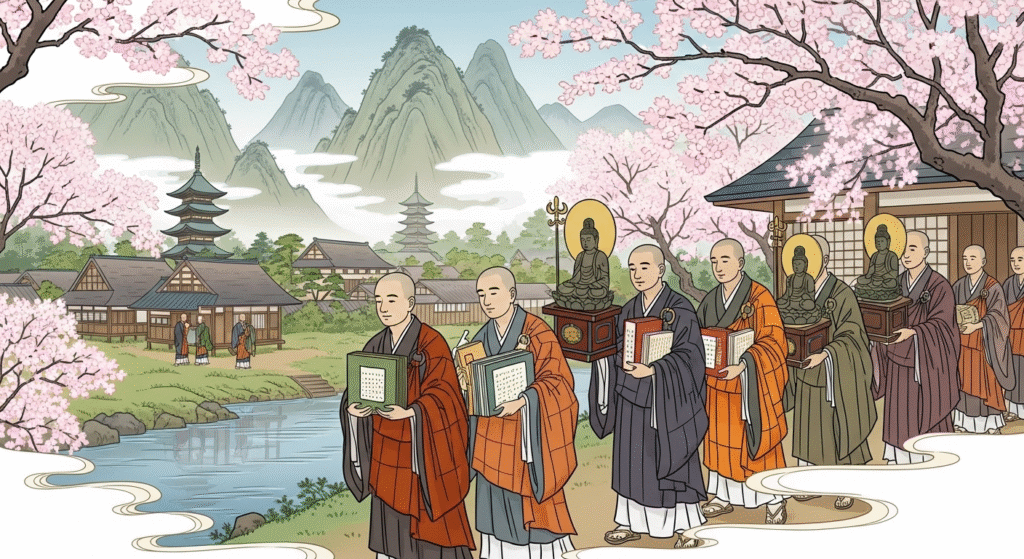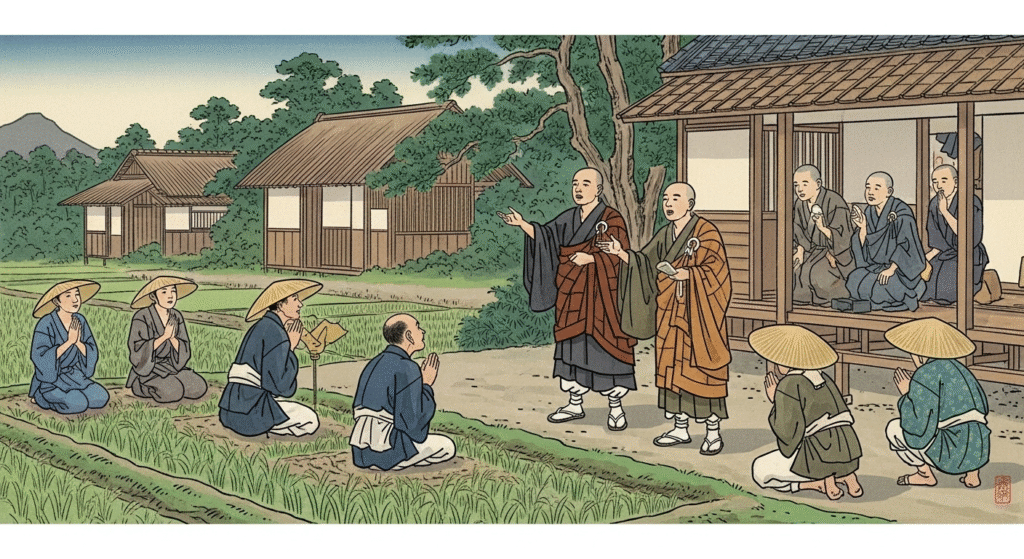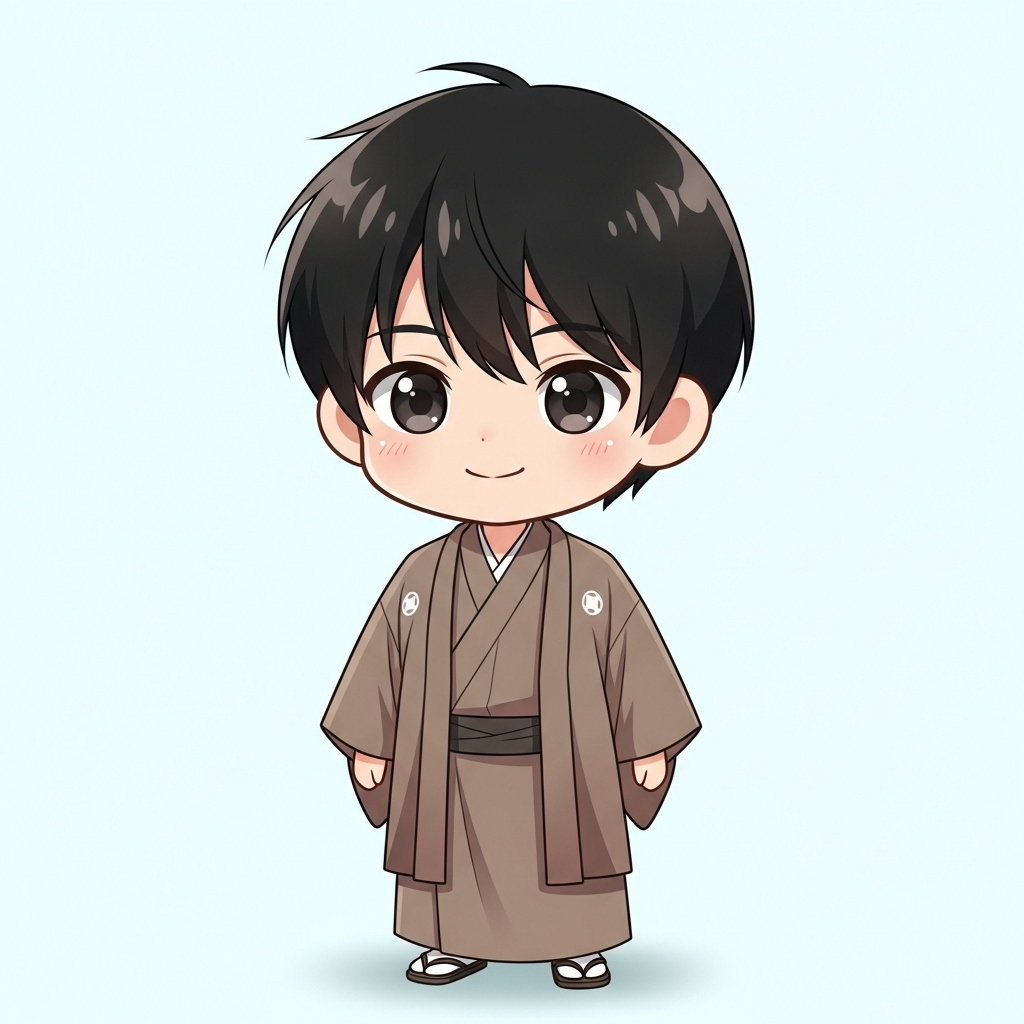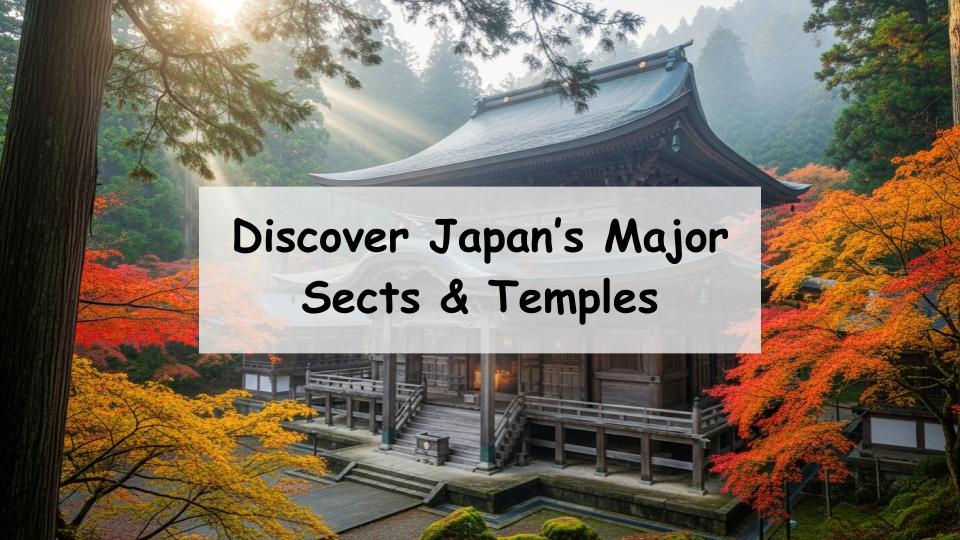Buddhism in Japan encompasses various sects, each with unique teachings and traditions. Many people wonder, “What are the differences between these sects?” or “Which temples are associated with which sects?” Each major Buddhist sect has a deep historical and doctrinal background, with well-known head temples located across Japan.
This article offers a clear and concise overview of the major Buddhist sects, their distinctive teachings, and the head temples associated with each. Whether you’re a temple tourism enthusiast or looking to deepen your knowledge of Japanese Buddhism, this guide will provide valuable insights.
- What Are the Major Buddhist Sects? An Overview of Japanese Buddhism
- Major Buddhist Sects in Japan and Their Teachings
- Head Temples of Major Sects and Their Locations
- Enjoying Temple Visits by Sect: Practices and Etiquette
- Conclusion: Deepening Your Understanding Through Buddhist Sects
- A Message from the Guide
What Are the Major Buddhist Sects? An Overview of Japanese Buddhism
Origins of Buddhism and Its Arrival in Japan

Buddhism began around the 5th century BCE in India, founded by Siddhartha Gautama (Buddha). It later spread throughout Asia and arrived in Japan around the 6th century via the Korean Peninsula. Initially introduced for political and national stability, Buddhism gradually became a widespread religion among the people.
Why Buddhism Split into Different Sects

Over centuries, differences in interpretation, practice, and emphasis led to the formation of distinct sects. Some sects focused on strict precepts, others emphasized chanting or meditation. These differences enriched Buddhism and allowed it to evolve in diverse directions.
Main Categories and Characteristics of Buddhist Sects in Japan
Japanese Buddhism mainly follows Mahayana traditions and includes several major sects. Tendai and Shingon emphasize esoteric practices. Jōdo and Jōdo Shinshū focus on faith in Amida Buddha. Nichiren centers on the Lotus Sutra, and Zen sects like Sōtō and Rinzai prioritize meditation. Each offers a unique spiritual path.
Major Buddhist Sects in Japan and Their Teachings
Tendai: Teachings and Historical Background
Founded by Saichō in the early Heian period, Tendai emphasizes the belief that all beings have Buddha-nature. Its hallmark is “comprehensive study,” integrating precepts, meditation, Pure Land practices, and esoteric rituals. This inclusive approach greatly influenced later Japanese Buddhism.
Shingon: Teachings and Esoteric Features
Shingon Buddhism was introduced by Kūkai (Kōbō Daishi) and is known for its esoteric practices. It teaches “becoming a Buddha in this lifetime” through mantras, mudras, and mandalas. The sect includes several sub-schools and is known for its mystical rituals.
Jōdo and Jōdo Shinshū: Differences in Pure Land Beliefs
Jōdo-shū, founded by Hōnen, teaches salvation through chanting the name of Amida Buddha (“Namu Amida Butsu”). Jōdo Shinshū, established by his disciple Shinran, emphasizes complete reliance on Amida’s compassion. While both focus on the Pure Land, Jōdo Shinshū rejects self-powered practices.
Nichiren: Focus on the Lotus Sutra
Founded by Nichiren during the Kamakura period, this sect centers on chanting “Namu Myōhō Renge Kyō” and revering the Lotus Sutra as the supreme teaching. It advocates active engagement with society and a passionate, faith-driven path.
Zen Sects: Sōtō and Rinzai Compared
Zen Buddhism emphasizes direct experience and meditation (zazen). Sōtō, introduced by Dōgen, focuses on “just sitting” (shikantaza). Rinzai, brought by Eisai, uses koans (paradoxical questions) and dialogue with teachers. Both aim for enlightenment in everyday life.
Head Temples of Major Sects and Their Locations
Tendai: Enryaku-ji on Mount Hiei
Located in Shiga Prefecture, Enryaku-ji is the headquarters of the Tendai sect. Founded by Saichō, it’s often called the “mother of Japanese Buddhism” as many later sect founders trained here. The temple remains an active center of practice.
Shingon: Kongōbu-ji on Mount Kōya
Kongōbu-ji, in Wakayama Prefecture, is Shingon’s head temple, founded by Kūkai. The mountain is a spiritual sanctuary filled with historic halls and sacred spaces, including the Okunoin, where Kūkai is enshrined in eternal meditation.
Jōdo: Chion-in and Zōjō-ji
Chion-in in Kyoto and Zōjō-ji in Tokyo are Jōdo-shū’s head temples. Chion-in was Hōnen’s base and maintains deep historical traditions. Zōjō-ji served as the Tokugawa family temple, adding significant historical value.
Jōdo Shinshū: Higashi Hongan-ji and Nishi Hongan-ji
Higashi Hongan-ji (Ōtani-ha) and Nishi Hongan-ji (Honganji-ha) are located in Kyoto and serve as the head temples of two main Jōdo Shinshū branches. These grand complexes continue to attract followers from across Japan.
Nichiren: Kuon-ji at Mount Minobu
Kuon-ji, located in Yamanashi Prefecture, was where Nichiren spent his final years. It serves as the head temple of Nichiren-shū and remains a sacred pilgrimage site for believers of the Lotus Sutra.
Sōtō: Eihei-ji and Sōji-ji
Eihei-ji, in Fukui, was founded by Dōgen and remains an austere training monastery. Sōji-ji, in Kanagawa, acts as a more accessible urban counterpart. Both play key roles in maintaining the sect’s rigorous tradition.
Rinzai: Myōshin-ji and Other Branch Temples
Rinzai has multiple branches, each with its own head temple, such as Myōshin-ji (Kyoto), Kennin-ji, and Engaku-ji (Kamakura). Each preserves its lineage and maintains the core principles of Zen practice.
Enjoying Temple Visits by Sect: Practices and Etiquette
Differences in Worship Styles
Worship methods vary by sect. In Shingon temples, visitors may hear sacred chants. In Zen temples, silent meditation is central. Knowing each sect’s style in advance helps deepen the experience.
Highlights and Attractions of Each Sect
Tendai’s Enryaku-ji spans an entire mountain, while Kōyasan offers a mystical Shingon experience. Zen temples often feature rock gardens and serene architecture. Understanding each sect enhances appreciation of temple design and ritual.
Basic Etiquette for Temple Visits
Respectful behavior is essential. Speak quietly, observe photography rules, and handle sacred spaces with care. When requesting goshuin (temple stamps), be polite and follow proper customs. Always approach temple visits with reverence.
Conclusion: Deepening Your Understanding Through Buddhist Sects
Why Understanding Buddhist Sects Matters
Learning about the major Buddhist sects in Japan reveals more than religious differences. It opens doors to cultural, historical, and spiritual insights, enriching one’s connection to Japanese heritage.
Making the Most of Temple Tourism
Whether for spiritual growth or cultural exploration, knowing the sect and history behind each temple makes every visit more meaningful. Let this knowledge guide you to a deeper, more rewarding temple journey.
A Message from the Guide

I want to visit all the main temples.




























Comment